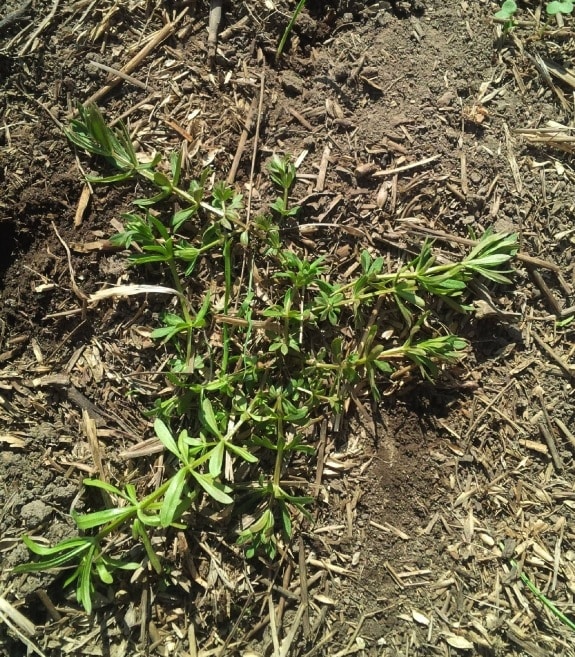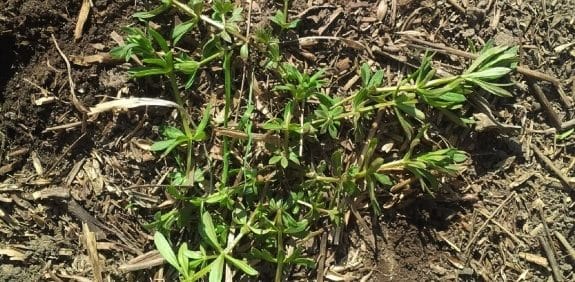
When winter annual cleavers are large and plentiful, spray them before seeding. The pre-seed window provides an opportunity to hit these large cleavers with rates needed for control.
Pre-seed rates of one litre (360 gae) of glyphosate per acre will be more effective than the common half-litre rate, and the 1.5-litre (540 gae) rate may be required.
Cleavers with large established roots are probably winter annuals and will need a higher rate. If roots are small and look like they germinated in the spring, a lower recommended rate may be enough. With large winter annual cleavers, it is best to wait 3-5 days before seeding to give the herbicide a chance to work.
To improve glyphosate performance, apply…
—When temperatures are greater than 10°C, with the expectation that daytime highs will increase to greater than 15°C
—When nighttime lows are greater than 5°C (the warmer the better up to 10°C)
—Under bright sunshine (thin or sporadic clouds are also OK). Applications made in darkness or heavy cloud are less effective.
—Using water with low levels of hard water ions (Ca and Mg), iron, or suspended clay or organic matter.
—At water volumes of 5-10 gallons/acre.
—When weeds are smaller, ideally at the 1-3 leaf stage.
—At speeds that minimize dusty conditions. Dust on leaves reduces herbicide uptake. If dust cannot be avoided, spray from downwind to upwind to minimize the dust deposition on unsprayed leaves. Or wait for rain to wash it off before spraying.
More information:
Advisory on quinclorac
Pre-seed product options for the whole rotation
Make a cleavers management plan
Manage cleavers through the whole rotation
Canola School video: Eliminating the competition.
Pre-seed burnoff: 8 top weeds and how to control them.

